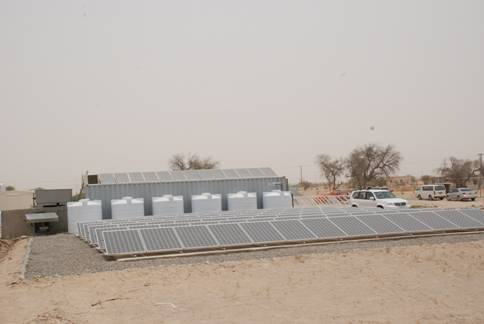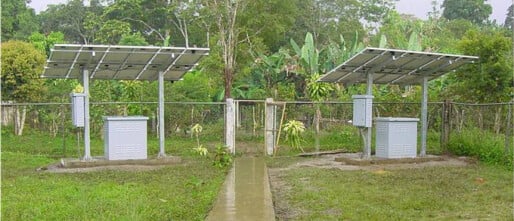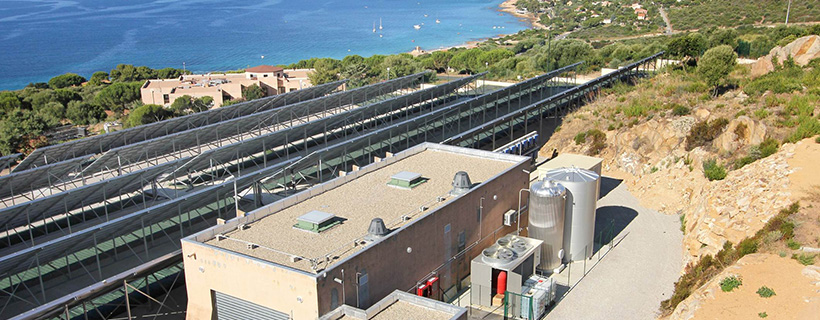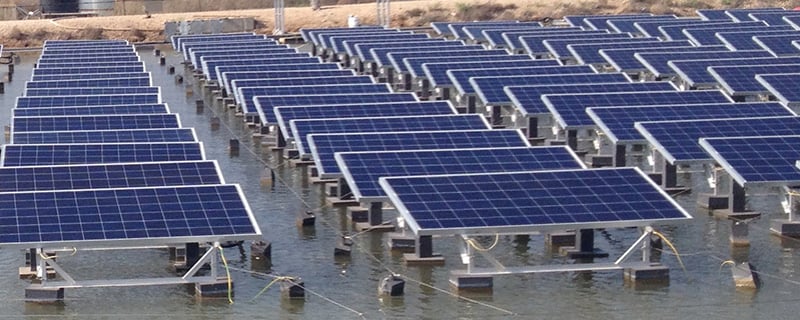About the Interviewee Oliver Kopsch:
What are currently the main water desalination technologies?
Membrane technologies surely are the workhorse amongst the desalination technologies. A membrane simply separates the good from the bad water. The vast majority goes for membrane technologies as they’re cheap and have been around for 20+ years.
However, the membrane selection is crucial, as for different types of raw water you need to find the matching membrane.
Reverse Osmosis is the most common membrane and on a small scale, these are the filtration stages:
Pre-filtration system
Use a robust sand filter to filter out larger particles out of the water before you let the water pass through the membrane. Therefore the Pre-Filtration is an important step.
Pre-filtration filters go from big to small:
- Filter 1, sand filter where bigger particles are rejected (100 microns)
- Filter 2, cartridge filters for smaller particles (50 to 25 or 5 microns)
- Filter 3 (for larger systems), Ultrafiltration: smallest particles, even up to filter out viruses and bacteria
RO stage
- The RO stage physically separates the drinking water from the leftover water.
One key factor to look at with RO systems is what to do with the brine, the leftover concentrate.

Large-scale, container-sized solar-powered water desalination system in the desert.
Brine
The Brine also called concentrate, is pumped either back into the sea or extremely further concentrated for producing salt.
In the Gulf region, due to the high level of large-scale desalination systems, there are some zones that suffer from considerable negative environmental impact.
An alternative is to turn the brine into salt. This is called ZLD: Zero Liquid Discharge. The concentration of the brine is brought up very high and then put in the open sun, and produces salt.
What are the biggest costs to keep an RO system running? Is it the replacement of the membranes?
The biggest cost is the energy, specifically the electricity to power the pumps. When you look at large-scale water desalination, you’re talking about MW consumption.
These are massive pumps that operate under high pressure and high volume.
For medium, to large desalination plants, another large cost is the chemicals used to clean the membranes. There’s a pressure sensor before and after the membrane: if the difference in pressure is too high, it means the membrane got blocked. These larger systems then automatically inject chemicals to clean the membrane.
Such a large system run 24/7, as it’s better for the membrane and obviously it’s better for ROI.
There are alternatives for not using chemicals though. In case you’re dealing with an abundance of salt or brackish water supply and plenty of “free” solar energy using Photovoltaics, there’s no need for a high recovery rate of fresh water, you can decide to go for a low recovery rate, for instance, 13% avoiding chemicals overall. This is mild to the membrane and therefore the membrane will not easily get blocked and will last a lot longer.
The higher the recovery rate (for instance 50/60/70% is high), the higher the stress on the membrane. For salt water membranes, the smaller the pores they get, the more water pressure (bar) required.
99.2 to 99.5% salt rejection is standard using good membranes. You can easily measure salinity with electrical conductivity by applying current: it’s a quick check on the water quality.

Kopsch tower in Ethiopia: a public wind hybrid powered desalination system with integrated energy recovery system
How do you determine the load management of a system?
Usually one can follow these steps:
- It always starts by asking: how much water do you need per day or per hour?
- Based on the water need, the required membrane surface can be picked
- Based on the membrane surface and the required water output, the flow of the water and the pressure (bar)is determined
- Once the flow of the water and the pressure is known, you can pick the right water pump.
- The water pump of course has a certain energy consumption and based on that, you can size your solar system
A membrane is like a coffee filter. It will get blocked at some point.
Alternatively, you can scale the system according to the power supply side, which means you would be producing the most drinking water during the sunny hours when the solar system produces the most power.
What are the markets you’re working in for decentralized water purification systems?
There are numerous markets in the Middle East and Africa where a decentralized water supply is needed.
Similar to the telecom industry, where countries never had an established fixed phone network, and everyone directly started using a mobile phone, the same is happening with water. Centralized Water infrastructure in many countries is underdeveloped.
Instead of establishing or expanding a centralized water supply with all the required infrastructure, the people are directly switching to decentralized water supply systems. It’s more reliable and cost-effective.
The advantage is to become independent from grid-based price increases from energy or water companies.
Does it make economical sense to install solar-powered water desalination systems?
In multiple countries and for many applications it already does. Similar to grid parity in the PV industry, I can tell you parity for drinking water when you provide me with the KwH price and drinking water price. Of course, it also depends on the raw water quality available.
One challenge on pricing is that centralized water supply systems as well as energy prices are heavily subsided, especially in developing countries. There’s no simple answer to this question, as there are many market segments and they’re all different.
One popular segment is on a community level, think about military camps, villages, new property developments, tourist resorts, hospitals, or school compounds.
There are no off-the-shelve solutions that fit every application. You can say that the water industry is consulting intensive! Systems are always modified to a particular usage.
Are people investing in solar-powered desalination systems by themselves, or is the demand mainly driven by NGO’s / charities?
NGO’s are one of the key customer groups for these systems.
The most promising future development is the so-called Micro Operating Systems based on renewable energies.
It’s a setup where we would design and supply all the equipment and a local operator runs the entire system. The operator manages the daily operations of the integrated solar & water system and sells the drinking water to the customers.
Such a setup is a recipe for long-term commercial and environmental success where the operating costs due to renewable energies are minimal and the return can be easily calculated: it ensures that a system is well maintained and well taken care of.
Water systems are different from solar systems. There are moving parts, a decent plumber is all you need”.
A tool that adds to this success is remote monitoring systems, which can tell us from a distance if a system is well maintained or needs some extra care.







